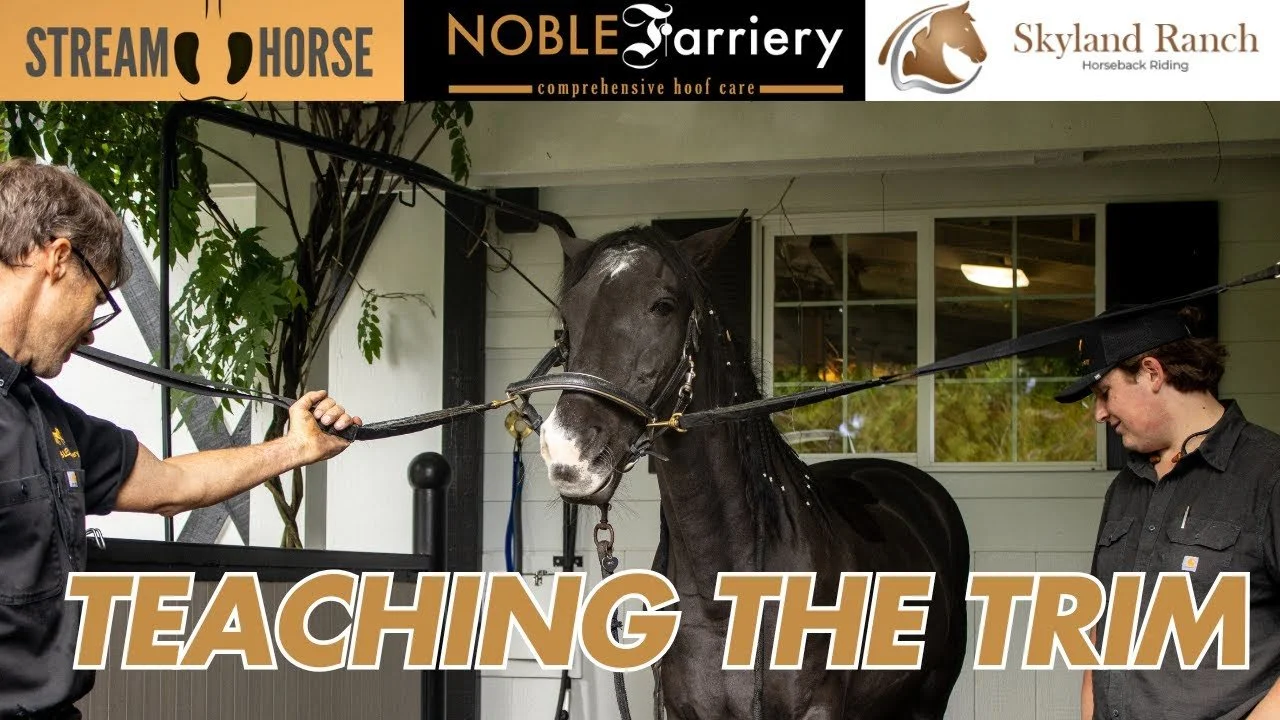Learning the Craft: New Trim Walkthrough on YouTube
Noble Farriery’s latest video on YouTube is an info-packed walkthrough of the Noble Farriery trim methodology, with Principle Farrier Seth Noble overseeing apprentice Brendan Wren as he works with horse Robby at Skyland Ranch. Seth Noble and podiatrist Brandon King have always sung Brendan’s praises as an invaluable farrier’s assistant, and a very quick study of their philosophy and techniques. The Noble Farriery team prides themselves on a collaborative approach that incorporate assistants and apprentices to help streamline workflows.
While this teamwork can dramatically reduce prep time—handling tasks like forging, cleaning, measuring, and cutting steel—the key to consistent, high-quality outcomes lies in maintaining one clear guiding vision throughout the process. In this video, Brendan takes the lead, with Seth hanging back and monitoring his progress and offering insights to the audience through the entire process.
The Power of a Unified Approach
The best, most holistic farriery work comes when one person—ideally the lead farrier or podiatrist—handles or oversees the entire process from pulling to trimming, forging to nailing. That’s because each phase yields subtle, diagnostic information about the horse’s needs, such as:
How the hoof reacts to removalHow balance shifts during the trimHow the hoof responds to pressure, and more.
Farriery isn’t just about the foot—it’s about the whole horse, from the ground up. Good trimming starts with a full-body evaluation, placing comfort and function above superficial symmetry or aesthetics. The hoof must support the horse's natural conformation, movement patterns, and comfort—not just reflect a tidy, standardized silhouette.
Further, farriers need to own the “big picture” for each horse—tracking how each hoof relates to the horse’s posture, movement, and ongoing soundness over time. Building a history and sharing that with other people who work with a horse is another foundational part of the Noble Farriery methodology, including owners, riders, veterinarians and, in this case, apprentices.
Trimming with Purpose
When trimming, we aim for a hoof capsule that’s just over a third—but less than half—the height from the center of the pastern to the ground. Recognizing and respecting natural asymmetries is critical. As Seth note in the video, the medial side of the hoof often presents with a longer heel-to-heel bulb distance and a higher coronary band than the lateral. Understanding these nuances allows us to trim in a way that supports rather than disrupts balance.
For barefoot horses, maintaining or increasing vertical depth is paramount. Depth not only supports shock absorption—it directly influences blood flow to the hoof structures. This is why the frog, a sensitive and essential structure, must be preserved as much as possible. It’s a natural cushion and a preventative defense against conditions like thrush.
In trimming, more isn't always better. Especially when working around the heel and frog, it’s wise to “leave more rather than take more.” Overtrimming these areas can lead to lameness, discomfort, and even long-term muscular or behavioral changes. The horse’s balance begins at the hoof—but it reverberates through the whole body.
The craft of farriery is both an art and a science, and it requires more than just hands-on training. It requires the cultivation of discernment, patience, and a deep respect for the horse’s needs. Watch the full video and see Brendan Wren and Seth Noble put this philosophy into practice.

